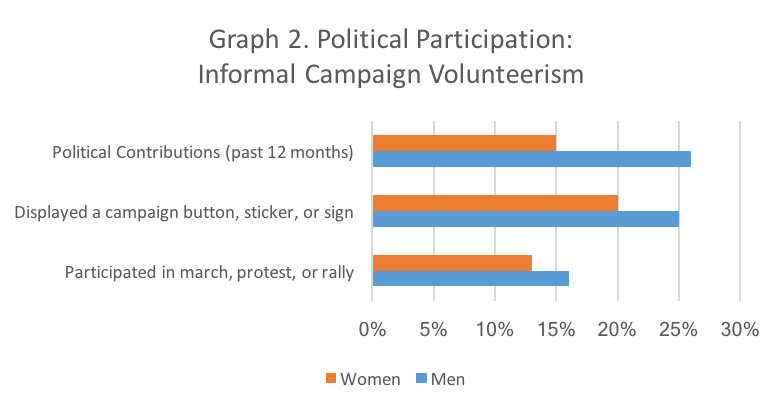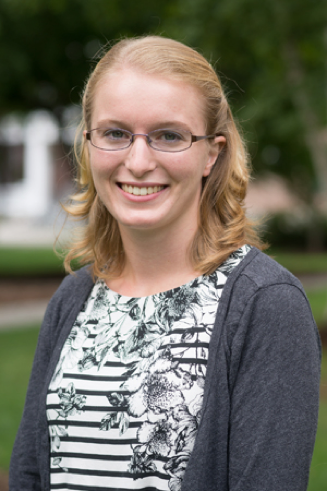Girls and women can, for the first time, see a woman on the ballot for President of the United States. This pivotal moment in history is the first time we can analyze the effect a woman at the top of a major U.S. party ticket has on the gender gap in political participation. Historically, men have had higher rates of political participation than women – especially when you consider visible political acts. Will the 2016 General Election change this trend?”
It is difficult for social scientists to compare presidential elections from year-to-year. Unique personalities of candidates and different historical contexts introduce a large amount of “noise” into elections analysis. Nevertheless, 2016 is an especially poignant year to ask, “What effect does a woman presidential candidate have on the gender gap in political participation?” In advance of the election, I argue there are two ways (one empirical, one theoretical) we can begin thinking about this question.
Empirically, early data released from the American National Election Study’s (ANES) 2016 Pilot Study gives us some early insights into how men’s and women’s political participation may be different in 2016. In January, the ANES collected data from 1,200 respondents using the YouGov panel to gauge political participation and expected voting behavior leading up to the fall General Election. This early-released data shows differences in women and men’s anticipated formal and informal political participation that contrast with 2012 behavior and prior scholarship.
First, 80% of women in the 2016 ANES Pilot sample expected to vote in November, versus 77% who reported actually voting in November 2012—a 4% increase. We do not see a similar upward trend in expected voting behavior versus actual voting behavior among men. In fact, about 4% fewer men were 75-100% sure they would vote in the 2016 general election than actually voted in 2012. Will the gender gap between women’s and men’s voting behavior shrink this November?

In terms of informal forms of political participation, there continue to be gender differences in campaign volunteerism in which men tend to participate more – especially in visible and conflict-oriented settings. However, there is a relatively small gender gap in visible acts of political engagement, such as displaying campaign “swag” and participating in rallies, which had 5- and 3- percentage point gender differences in participation (respectively) at the time of the survey. If confirmed in future post-election surveys, this would deviate from past research on similar measures. Notably, the early-released empirical data from ANES only gives us a preliminary, non-representative view into the shifting gender gap in political participation.

Considering what kinds of social mechanisms might shape changes in political participation, we have to step beyond the numbers a bit. For instance, consider the popular #imwithher campaign. In February, the #imwithher video posted by Lena Dunham featured 17 celebrity women openly supporting Hillary Clinton’s run for president. From Katy Perry’s performances at campaign rallies to Abby Wambach stumping for Hillary at college democrats’ events around the country, Clinton has received a groundswell of public endorsements from high-profile women.
We know that visible members of our pop culture in our reference groups can influence political behavior. In a gender salient context, such as the 2016 general election, visibility of celebrated women in pop culture engaging in politics may have a significant influence on women’s political engagement in particular. Perhaps, in other words, it is not just seeing a woman on the ballot that could shape levels of political participation and anticipated political behavior on election day. Maybe seeing public political statements by high profile celebrity women and other celebrated women in our society is shaping increases in women’s participation this election as well.
Whatever the results of the November 8th election, early indicators suggest that this may be a paramount year for reducing the gender gap in political participation. Political participation not only shapes election outcomes, but also the substantive representation of people in the policy-making process. When more women vote, their collective voice is louder—even when their voices are divided and shouting in different directions. Whatever happens this November, the data suggests that this election season, women voters are channeling Katy Perry’s anthem, “You’re gonna hear me roar.”
___________________________

Morgan C. Matthews is a PhD student in the Sociology Department at the University of Wisconsin-Madison. Her research focuses on gender, political participation and representation, and the intersection of work, family, and civic voluntarism.
